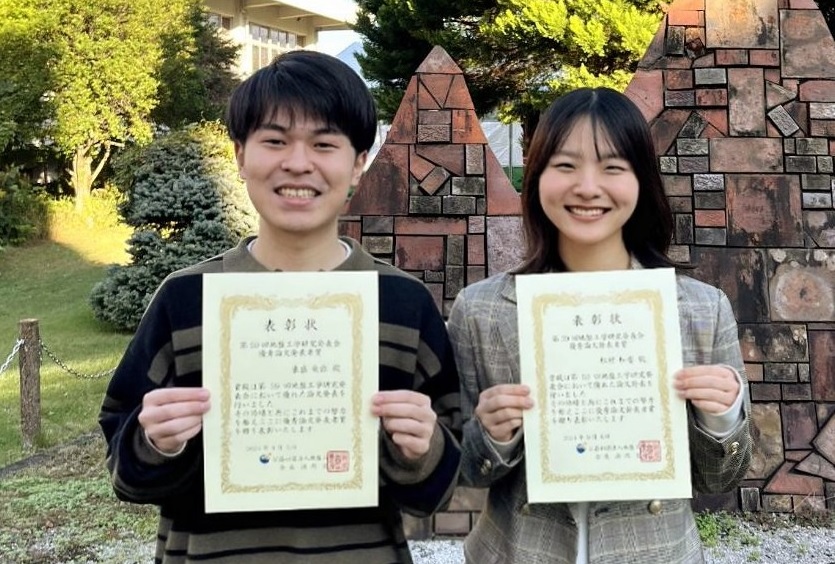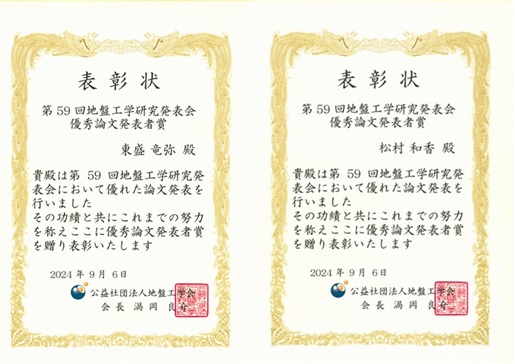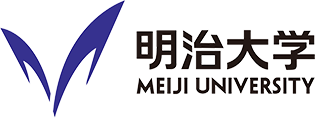[Graduate School of Agriculture, School of Agriculture] TOMORI Ryoya and MATSUMURA Nodoka receive the Outstanding Paper Presenter Award at the 59th Japan National Conference on Geotechnical Engineering
Dec. 09, 2024


TOMORI Ryoya, a first-year master’s degree student in the Agricultural Chemistry Program, the Graduate School of Agriculture, and MATSUMURA Nodoka, a fourth-year student in the Department of Agricultural Chemistry, the School of Agriculture (both from the Laboratory of Soil Science), received the Outstanding Paper Presenter Award at the 59th Japan National Conference on Geotechnical Engineering held in July 2024 (number of published papers: 1,109).
Title: Clarification of soil components controlling sand gel time in organic chemicals (TOMORI Ryoya)
The chemical injection method is a method of injecting a chemical into the ground to solidify the ground whose solidification time can be adjusted as desired. However, depending on the soil type, the solidification time cannot be adjusted as expected. In this study, AIMORI hypothesized that the gap between the assumed and actual solidification time depends on the eluted components from the soil and attempted to clarify the factors causing the difference between the two. As a result, it was found that the elements eluted from the soil, especially aluminium, caused the solidification time to be shorter than expected.
Title: Optimum addition rate of granulated and solidified biomass ash to planting soil for forestry use (MATSUMURA Nodoka)
Effective utilization of wood ash generated by wood biomass power generation, which is a renewable energy, is desired. In this study, MATSUMURA attempted to clarify the optimum addition rate of granulated and solidified material which inhibits the elution of heavy metals for reduction to forestland. As a result, it was found that although the amount of nutrients increased according to the addition rate, the soil pH also increased, and the optimum addition rate was 5% to 10%.
≪Japanese version≫Title: Clarification of soil components controlling sand gel time in organic chemicals (TOMORI Ryoya)
The chemical injection method is a method of injecting a chemical into the ground to solidify the ground whose solidification time can be adjusted as desired. However, depending on the soil type, the solidification time cannot be adjusted as expected. In this study, AIMORI hypothesized that the gap between the assumed and actual solidification time depends on the eluted components from the soil and attempted to clarify the factors causing the difference between the two. As a result, it was found that the elements eluted from the soil, especially aluminium, caused the solidification time to be shorter than expected.
Title: Optimum addition rate of granulated and solidified biomass ash to planting soil for forestry use (MATSUMURA Nodoka)
Effective utilization of wood ash generated by wood biomass power generation, which is a renewable energy, is desired. In this study, MATSUMURA attempted to clarify the optimum addition rate of granulated and solidified material which inhibits the elution of heavy metals for reduction to forestland. As a result, it was found that although the amount of nutrients increased according to the addition rate, the soil pH also increased, and the optimum addition rate was 5% to 10%.


